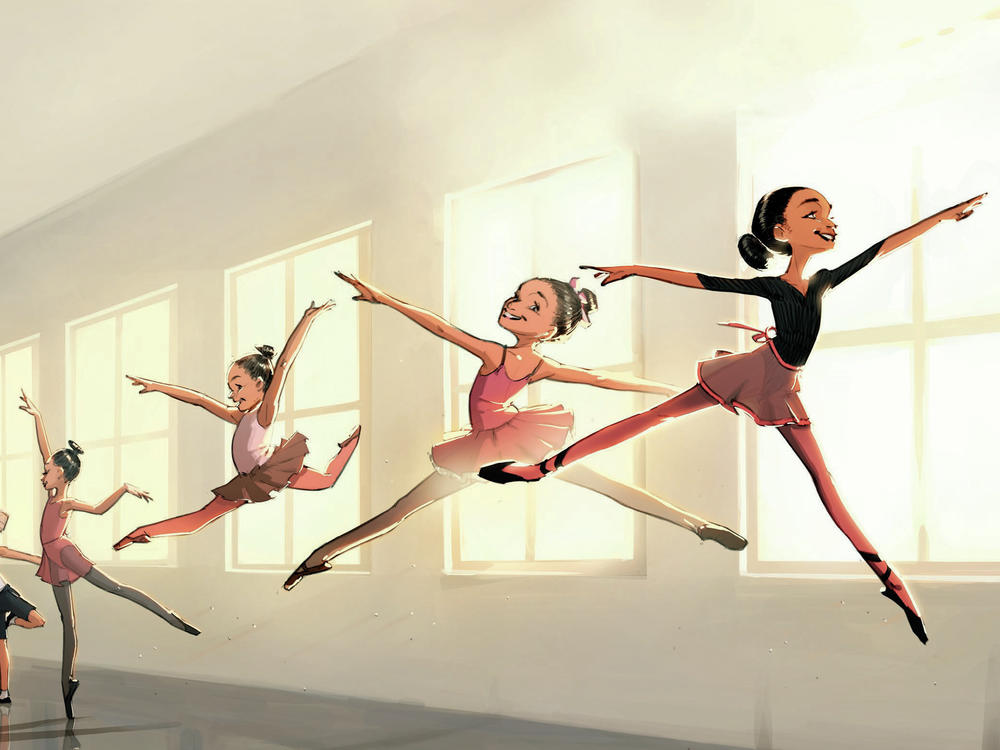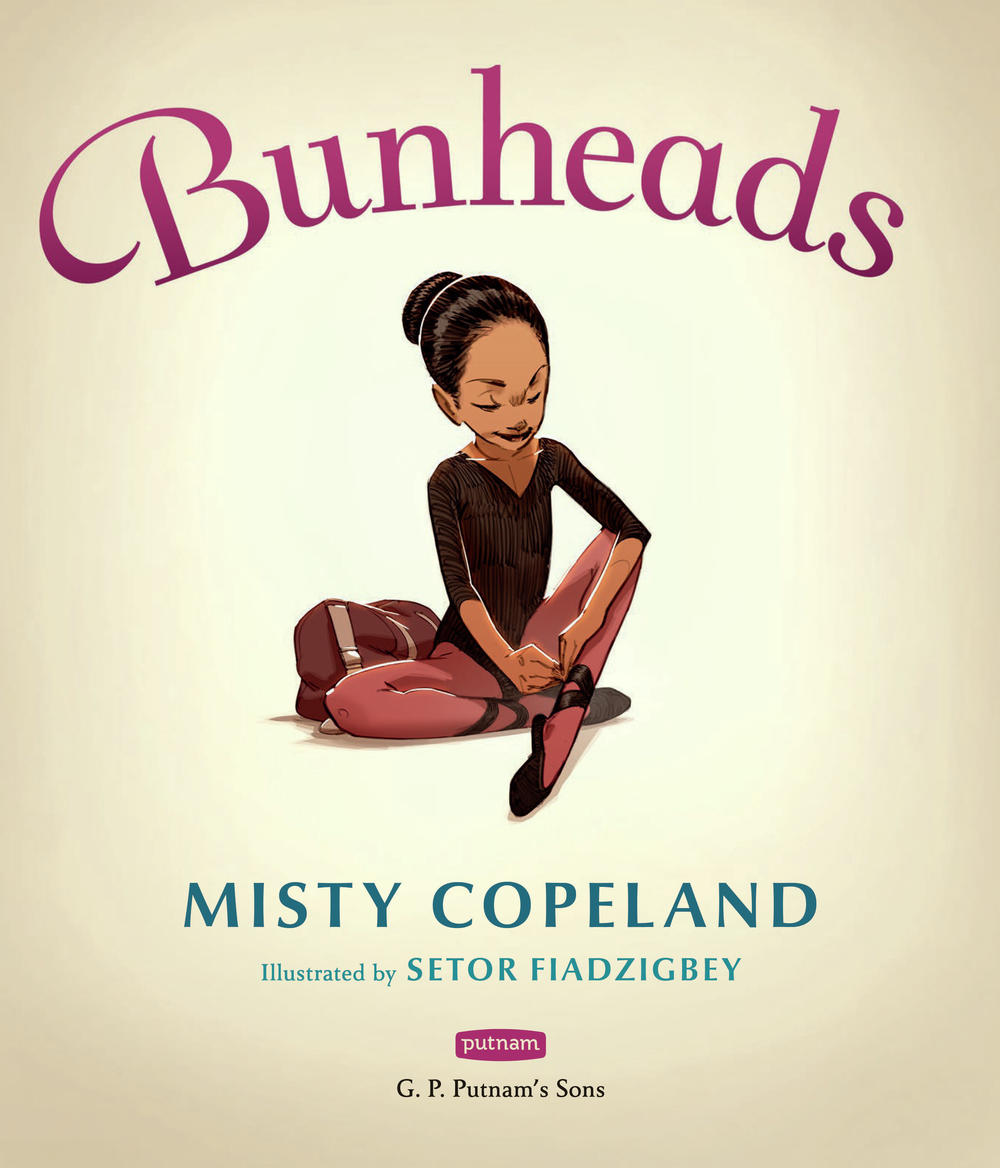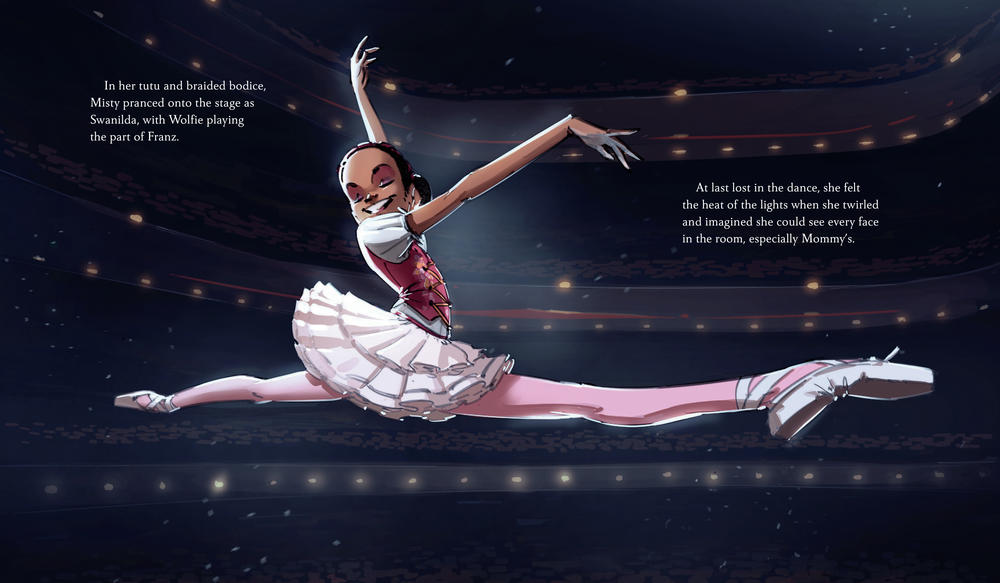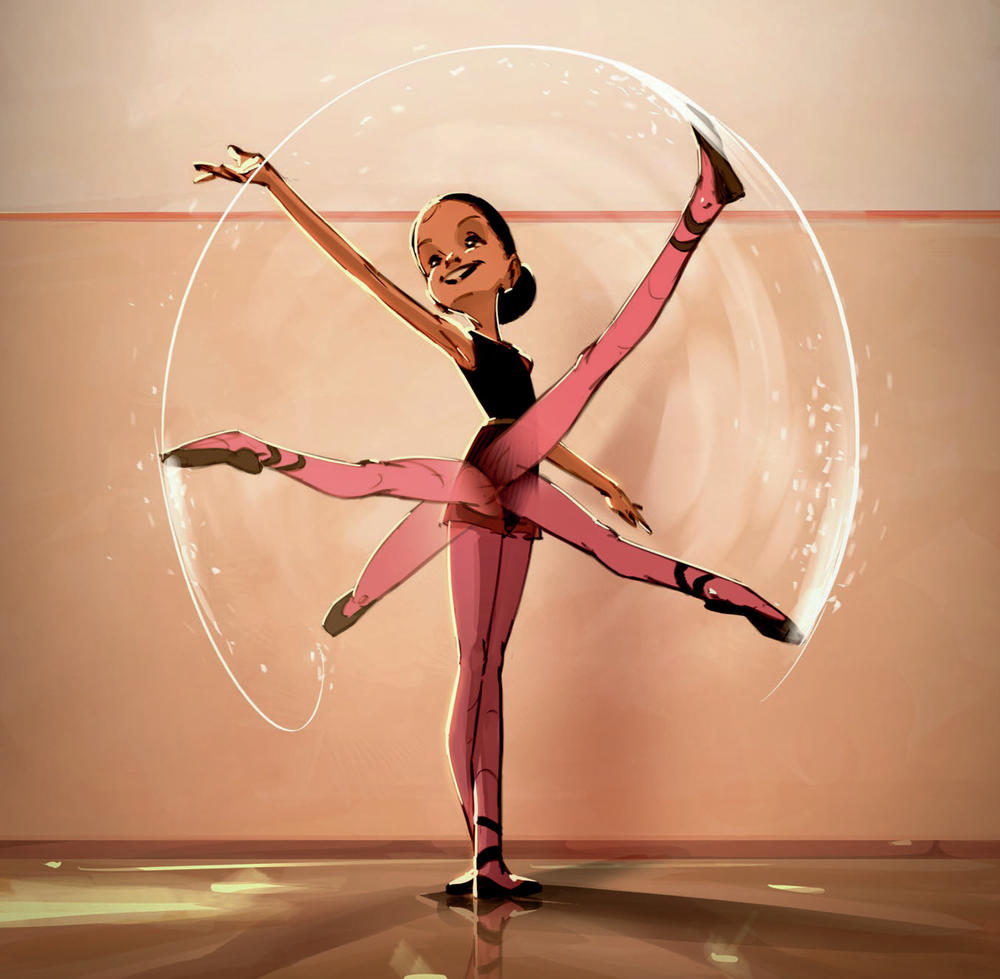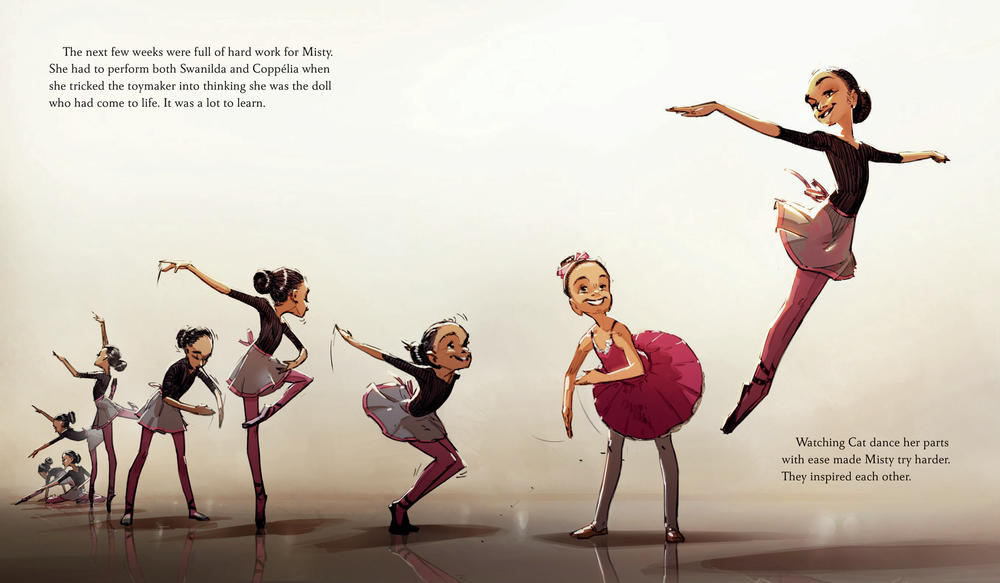Section Branding
Header Content
Misty Copeland Celebrates Ballet's Beautiful Friendships In 'Bunheads'
Primary Content
In Misty Copeland's new book Bunheads, a young girl named Misty discovers her love of dance with her friends. The dancers in this studio "come from all different walks of life," Copeland says. "They have different backgrounds, different body types, different skin color, different hair color, different ethnicities."
Copeland is a principal dancer for American Ballet Theatre and best-selling author. Her 2014 book Firebird won a Coretta Scott King Award. She started training in classical ballet when she was 13.
"Most of these characters are actually based on my actual friends I grew up with ..." she explains. "I wanted to be able to share a story of these beautiful relationships."
In Bunheads, a young Misty dances the ballet Coppélia — it's the story of a young toymaker who devises a villainous plan to bring a doll to life. It was one of the first ballets Copeland danced when she was just learning ballet — and it was among the first big principal roles she danced as an adult with American Ballet Theatre.
"It was a fun story that had a lot of color, a lot of costume changes, a lot of scene changes," Copeland says. There's also a "delicate romance," she explains, but "nothing crazy or overly passionate."
Bunheads was illustrated by Setor Fiadzigbey. He usually draws superheroes and had never drawn dancers before. "I was a fish out of the water when it comes to dancing and ballet and the Coppélia play," Fiadzigbey says.
But Copeland didn't mind that Fiadzigbey didn't have dancers in his portfolio. "When I saw Setor's illustrations and art, though none of them were were ballet dancers, they were superheroes," she says. "And I think to myself, dancers are superheroes." Copeland was confident he could translate that superhero energy into dancers who would leap off the page.
What Fiadzigbey might have lacked in experience he made up for in diligent research. "Thanks to all the YouTube videos and the Google image searches and all of that ...you can go and do the research and get the kind of information that you need," he says.
Fiadzigbey begins the book with "a pretty warm palette" and then builds to Misty on stage with "a bit of a cooler temperature."
He also evokes the movement of the dancers in sketched rather than finished lines. "I've always been in love with sketches, with the kind of energy that you find in sketches versus very finished, final work," Fiadzigbey says. "Since we're also dealing with something like dancing, I thought that it was important to have that energy."
Copeland says that approach mirrors the work of a dancer. "We're layering on experience and information and preparation to get to the final product," she says.
Copeland was "blown away" by the way Fiadzigbey captured the footwork, the line of the body, and the athleticism of the dancers.
"My idea of ballet and the dancers was completely shattered ..." Fiadzigbey says. "I realized that sometimes you guys would actually have to almost defy body mechanics."
One of Copeland's favorite examples of this is in an illustration of young Misty practicing the rond de jambe to tendu front. "You see the steps in her leg kind of making the big circles through the air. ..." Copeland says. "That's such a physical and athletic movement, but yet so graceful in the way [Fiadzigbey] captured it. I think it's important for kids to see ballet in that way."
Fiadzigbey was drawn to Bunheads because he saw it as a book of dreams. "I have a young daughter, and I would like her to be able to pursue her dreams, to have the boldness and the courage to pursue them, whatever they may be," he says. "If it's dancing, so be it. If it's something else, that's fine. I think Bunheads speaks to that."
Copeland hopes this book helps young dancers feel comfortable in the studio and on the stage. "I feel like having a book like this would have maybe made me feel more accepting and comfortable with my body and being an athlete," she says.
Beth Novey adapted this interview for the Web.
Copyright 2020 NPR. To see more, visit https://www.npr.org.
